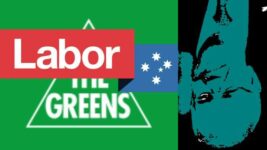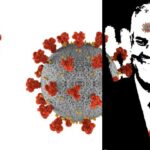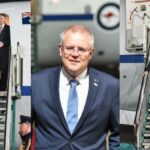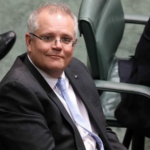Australia Has Spoken: Greenslides, Triumphant Independents and Far-Right Rejection

Whether Labor takes the majority or remains minority, the Australian public has broken the bipartisan line with the results of this election.
The duopoly that has been the old white boys club shifting laws around to favour fossil fuel corporates has a hole in it and the profits are leaking.
A key expression of the grassroots change that has occurred was Independent Dai Le taking out Kristina Keneally, after the new government parachuted the white Labor royalty in from the plush Northern Beaches to contest the southwestern Sydney electorate of Fowler.
The Christian American-Australian politician was sent in to take out the Fowler lower house seat: a Labor stronghold since 1984 and also one of the most economically disadvantaged electorates in the country, with a significantly multicultural and multifaith community.
Fowler is also part of the region that the NSW government – admittedly made up of the other white Christian major party: the Liberals Nationals – recently subjected to a prolonged second-class status ultra-restrictive lockdown.
Fowler chose Independent MP Dai Le, who’s a local Vietnamese woman and the current Fairfield deputy mayor.
While further across the political map, teal independents took away numerous key blue-ribbon seats from the Liberals.
Monique Ryan took Kooyong from Josh Frydenberg. Allegra Spender took Wentworth from Dave Sharma. Kylea Tink took North Sydney from Trent Zimmerman. Kate Chaney took Curtin from Celia Hammond. And Zali Steggall retained Warringah.
Fall of the far-right
At the time of writing, Pauline Hanson’s seat in the Senate continues to be threatened. The One Nation leader is currently battling it out for the final Queensland seat in the red chamber with Legalise Cannabis Australia candidate Bernard Bradley, a Noosa criminal defence lawyer.
Hanson has stood as a symbol for the racist far-right conservative side of Australian politics since the mid-1990s.
So, for her place in the Senate to be currently under question due to the rising voice of those who want to end cannabis prohibition in this country is quite a significant show of political change.
Meanwhile, the other far-right player Clive Palmer’s United Australia Party is in third place with the pro-cannabis candidate ahead of it in the race for the last Queensland Senate seat.
Indeed, with close to $100 million in advertising, UAP couldn’t garner any seats nationwide.
The greatest loss for the right though is the fall of the Morrison government and an end to close to a decade of ultraconservative Liberal Nationals governance.
Scott Morrison is no longer the prime minister of the nation, leaving Anthony Albanese with a very muddy set of shoes to step into, while archvillain Peter Dutton is set to take over a self-imploding Coalition.
The best possible outcome
Now Australian Greens Senator David Shoebridge told Sydney Criminal Lawyers two weeks back that the best possible outcome for this election would be a strong progressive crossbench made up of Greens and independents with Labor in the minority.
“The Greens are aiming to have 12 senators across the country at the end of this election campaign, which would be a record number for any third party in the federal parliament,” Shoebridge said. And that’s what occurred.
Before Hanson was in battle with Legalise Cannabis, she was first knocked out by new Greens Senator Penny Allman-Payne.
What’s being termed as a “greenslide” has happened this federal election, which means that Labor can now be held to account on issues, such as a federal ICAC and war powers reform.
And not only did the Australian Greens promise immediate movement on an anticorruption body if provided a dozen in the Senate, but in tandem with the huge independent representation in parliament now, progressive movement on the climate crisis seems imminent.







